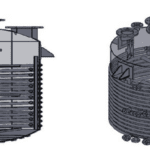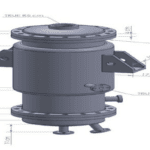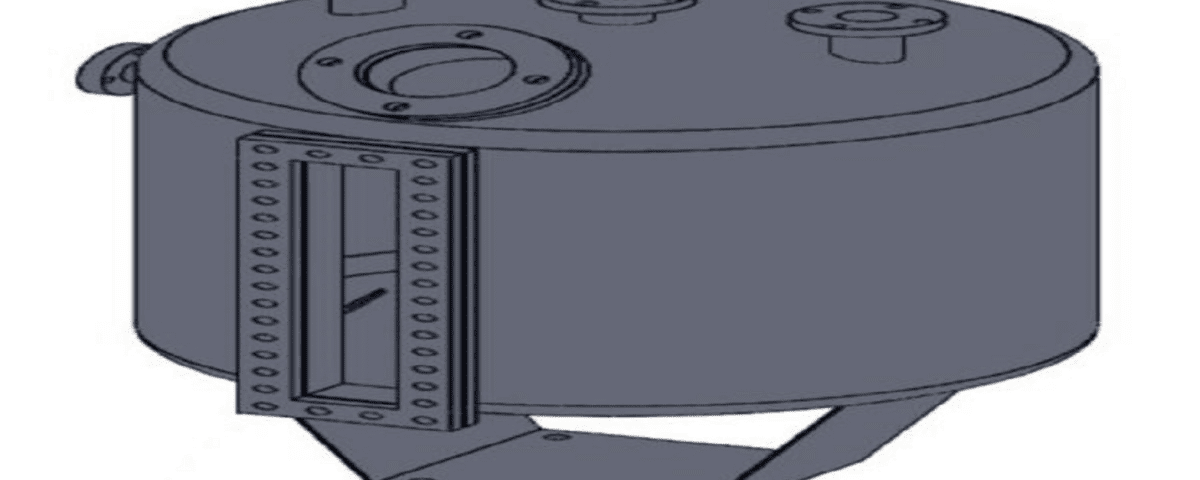Introduction
Shell & Tube Heat Exchangers are among the most common and effective equipment in industrial processes, used to transfer heat between two fluids at different temperatures. Due to their simple structure, high efficiency, and reliability, these exchangers are widely used across applications in the oil and gas, chemical, and power generation industries. An optimized design for these exchangers can have a significant impact on improving energy efficiency, reducing costs, and enhancing system performance.
In this project, the primary goal was to design a Shell & Tube Heat Exchanger using SolidWorks. Key parameters such as tube count, tube diameter, material selection, and fluid inlet and outlet design were considered. The design was carried out to optimize the thermal and mechanical performance of the exchanger while reducing construction costs.
Details
The aim of this project was to design a Shell & Tube Heat Exchanger with two fixed heads. This exchanger, made of S.S 316L, is suitable for a range of chemical reactions. Upon project completion, you will receive five sheets of equipment construction drawings, including:
- Body Drawing
- Bill of Materials
- Tube Sheet & Baffle Drawing
- Tubes & Flange Drawing
- Nozzles Orientation Layout
All drawings are provided in AutoCAD format, and SolidWorks files will also be included. This equipment was constructed for a paint and resin unit in the Shiraz Industrial Town in 2019 and is currently operational.

Optimized Structure of the Separator: Materials and Components
- Material: Using stainless steel (S.S 316L) enhances corrosion resistance, making it ideal for processes involving corrosive chemicals.
- Vertical Sight Glass: The sight glass allows operators to visually monitor internal processes, providing a valuable tool for process control and quality assurance.
- Couplings and Nozzles: Nozzle design facilitates easy connection to material transfer lines, improving operational convenience.
Application of the Vertical Separator in Industrial Units
This separator’s design is tailored for use in a paint and resin industrial unit, offering benefits such as:
- Enhanced Reaction Control: The vertical sight glass enables operators to monitor internal processes in real-time, improving quality control for the final product.
- Increased Safety: Observing internal processes without opening the separator minimizes exposure to hazardous chemicals.
- Extended Equipment Life: The choice of 316L stainless steel ensures durability in harsh operating conditions.
Conclusion
This project exemplifies the importance of designing suitable equipment for sensitive chemical processes. Given the unique features of this separator, such equipment plays a crucial role in improving efficiency and safety in chemical processes. Furthermore, the use of a vertical sight glass and stainless steel construction effectively addresses the specific needs of the paint and resin industry.
Design of 316L Vertical Separator with Sight Glass
In this project, vertical separator design and AutoCAD and SolidWorks designing have been done.


